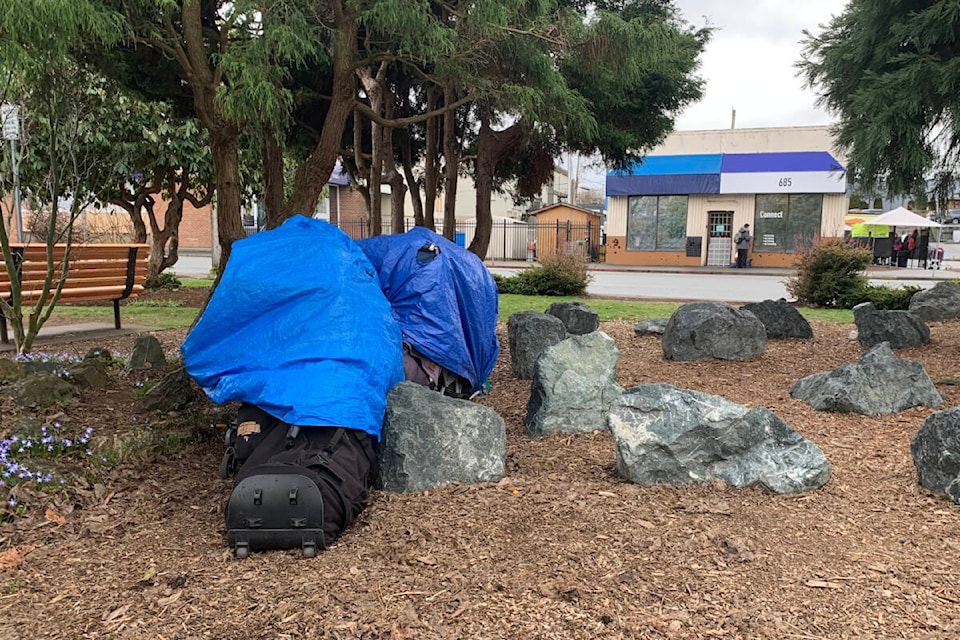As the days get shorter and the temperature gets colder, 272 residents of the Comox Valley are facing an uncertain future.
As of Oct.5, the majority of the region’s unhoused population has nowhere to go in case of severe winter weather or emergency.
Angela Fletcher, co-ordinator at the Coalition to End Homelessness, is currently working to find a solution to this pressing problem.
“We are looking for a place and we need a big location… that’s difficult to find,” said Fletcher. “We definitely don’t have enough space. We were lucky to work with the (church of) St. John the Divine last winter, but that’s not an option this year.”
(According to a previous interview with Rev. Alistair Hunting of SJTD, that decision would have come from the diocese in Victoria. The Record reached out to Hunting for comment, but could not connect with him by press time.)
Currently suffering from a severe shortage of shelter options, the region offers fewer than 65 beds, split between the Connect Centre and the Pidcock House. This leaves nearly 80 per cent of the homeless population with nowhere to go.
Despite these challenging circumstances, Fletcher remains optimistic, emphasizing that little is needed to provide housing for the community’s most vulnerable.
“We just need a basic room, running water, a washroom and we could make it work,” said Fletcher. “People’s lives would be saved and that’s all we need… to get through this winter.”
Adopting a proactive and collaborative approach, Fletcher is connected with numerous community organizations and Courtenay’s city council in the hope of achieving positive results.
The Record contacted Courtenay Mayor Bob Wells to inquire if any solutions would be available shortly.
“No… We’ve been working on this (for two decades) long before I got on council. This has been a long-standing problem,” said Wells. “We’re continuing to work with BC Housing and this is their responsibility.
“We have been working with them to build even more purpose-built shelters.”
Wells further explained that there are numerous challenges related to the opening of low-barrier housing facilities. One of them being the lack of funds.
“The city unfortunately doesn’t have the resources,” said Wells. “We don’t even get enough taxes, to look after roads, water, sewer, and those sorts of basic things.”
Wells added that in order to open a shelter, the municipality needs to ensure the safety of its users.
“Unfortunately, it is a very complicated situation when it comes to providing land,” said Wells. “After talking with our fire chief and the police chief, we don’t have any place that we can ensure would be a safe place. There have to be safety measures in place.”
Whereas this shortage in housing options is an administrative puzzle for some, it is a life-threatening situation for others.
“Last winter, I got frostbite and (suffered from) hypothermia,” said Mike Willington, who has been homeless for the last four years. “I woke up in the hospital and I was naked in a warming blanket. My internal temperature was 30.4 C.”
Once out of the emergency, Willington learned that bystanders had called paramedics after finding him unresponsive in the streets. Without this intervention, the man stated that he wouldn’t be here today.
Winter poses an inherent threat to those living without a fixed address. Depending on the limited warmth provided by their improvised shelters, the cold and wet conditions isolate those in need of help.
Historically speaking, winter is synonymous with rising rates of overdoses, assaults, thefts, and other crimes, further endangering an already vulnerable population.
RELATED: Homelessness has jumped by 106 percent in the Comox Valley
NEWSLETTER: Sign up for local news updates to your email
